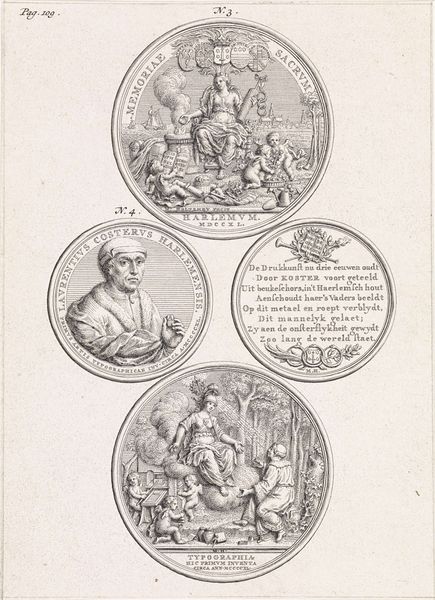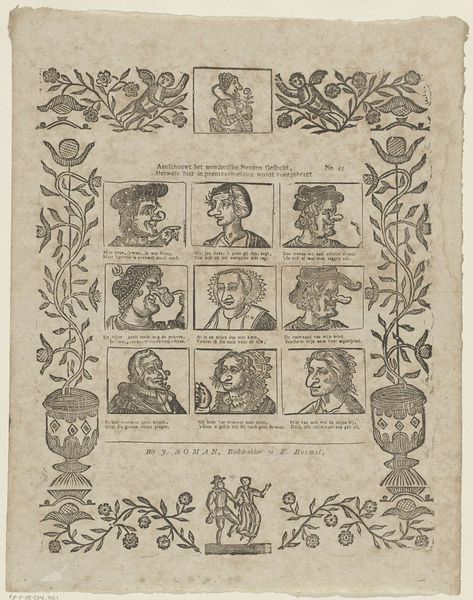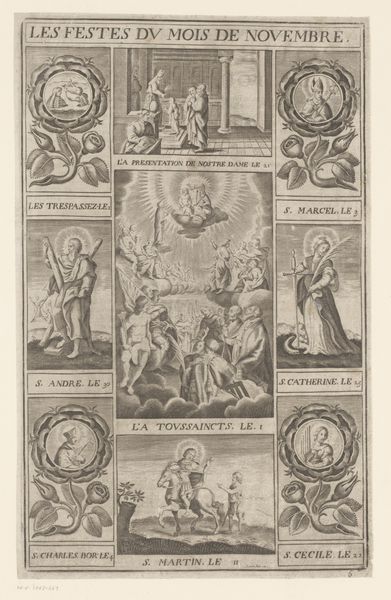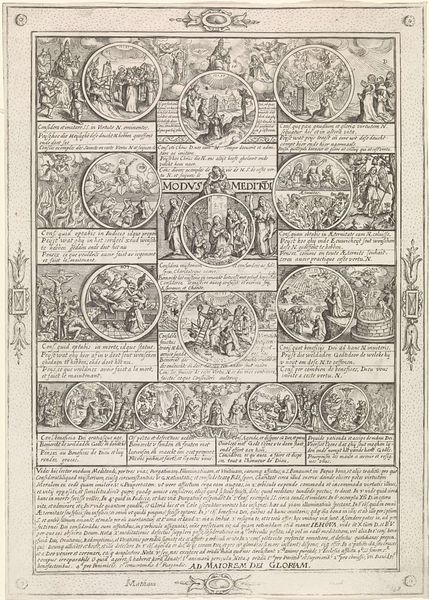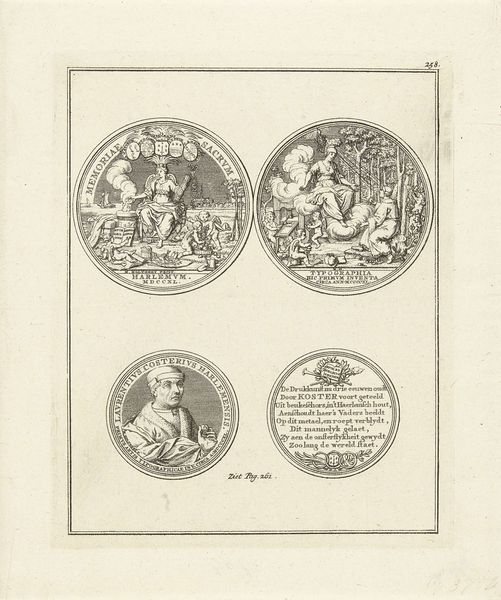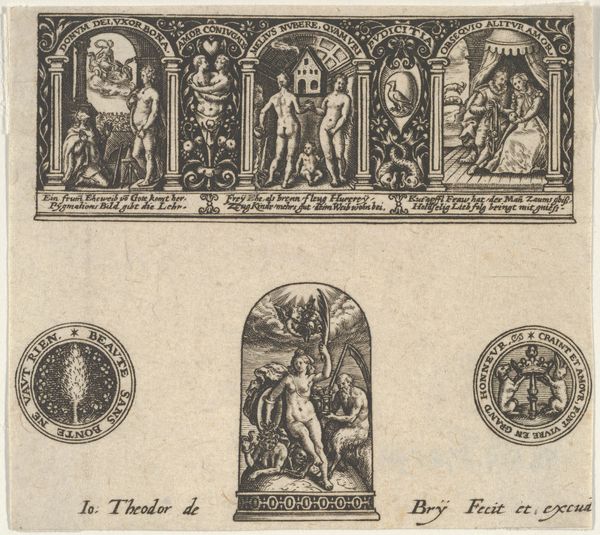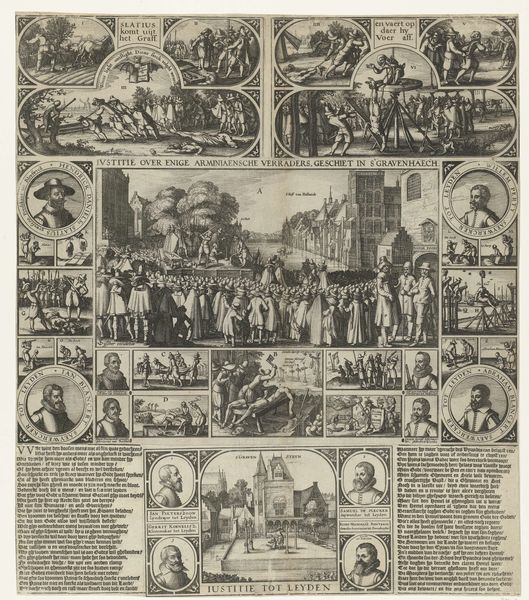
graphic-art, print, engraving
#
portrait
#
graphic-art
#
baroque
#
pen drawing
# print
#
pen illustration
#
geometric
#
line
#
history-painting
#
engraving
Dimensions: height 548 mm, width 400 mm
Copyright: Rijks Museum: Open Domain
This print by Jan van Vianen, made in the Netherlands around 1700, depicts rows of emperors and kings, each framed in a coin-like medallion. More than just portraits, these images participate in a visual language that asserts power and legitimacy. Consider the context: the Dutch Republic, a relatively new nation, was defining its place in Europe. Depicting rulers from the past served to establish a lineage, a historical grounding for contemporary power structures. The visual codes—crowns, laurel wreaths, and imperial eagles—speak to a claim of authority rooted in ancient empires. Who was this artwork made for? It probably wasn't for the masses. Prints like these were likely commissioned by those in power, reinforcing their status through historical association. Understanding this artwork requires exploring the visual language of power in 18th-century Europe. Researching the symbolism of these images, and the political context of the Dutch Republic, enriches our understanding of how art serves to uphold or challenge social norms.
Comments
No comments
Be the first to comment and join the conversation on the ultimate creative platform.



